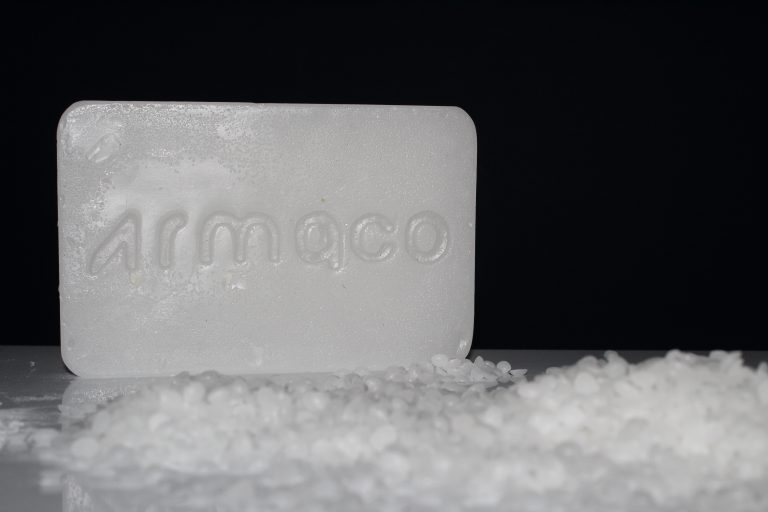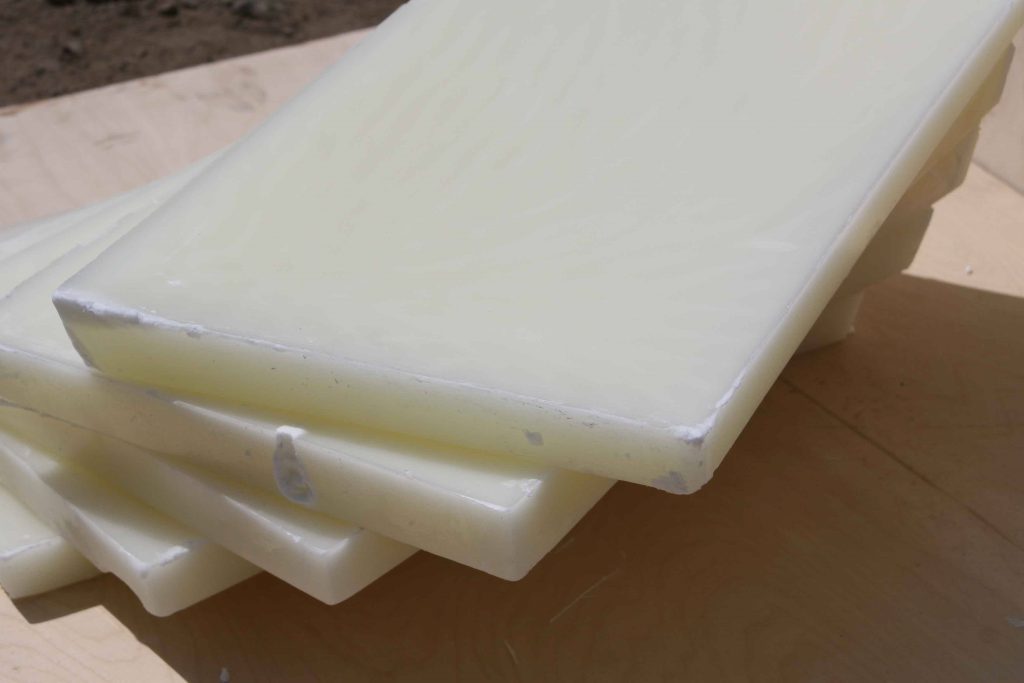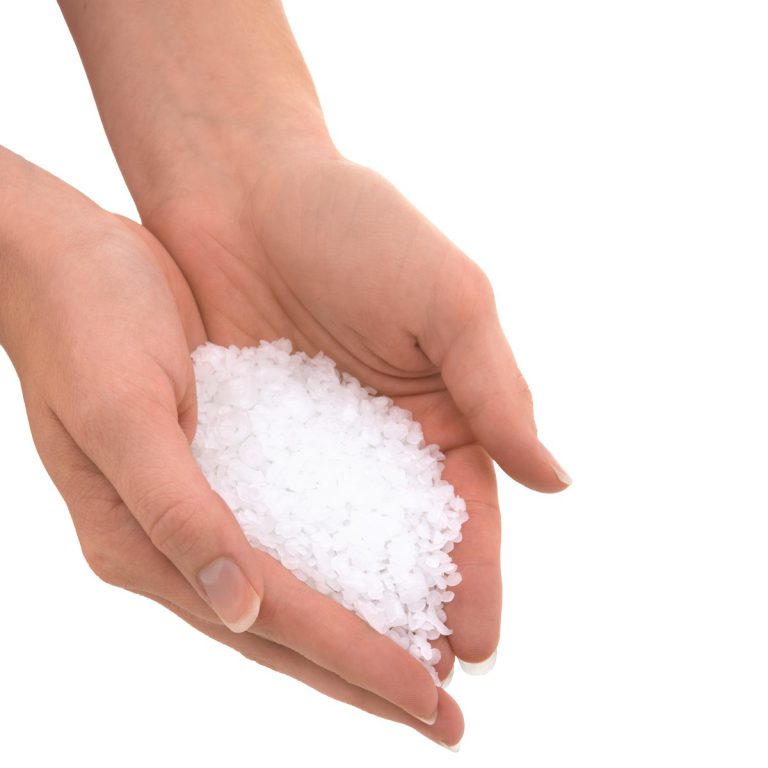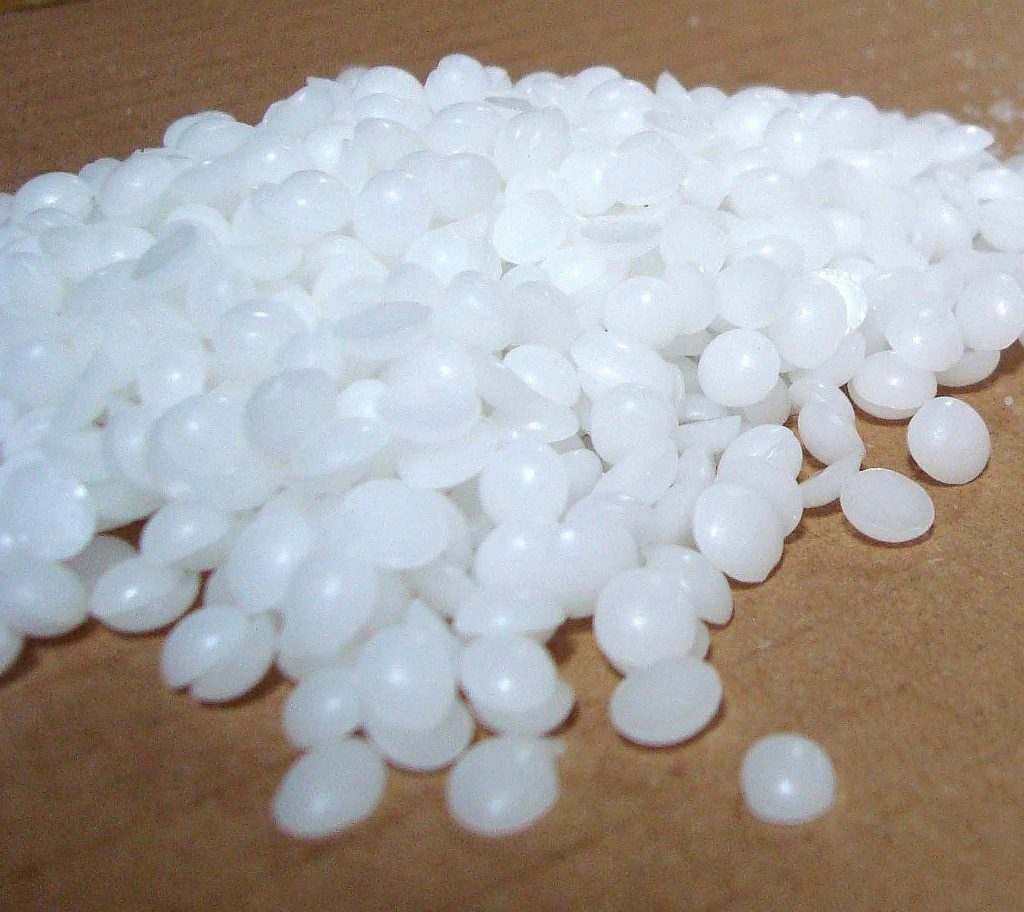What is solid paraffin?
Paraffin is a mixture of solid saturated hydrocarbons extracted from crude oil, with a carbon number between 20 and 40, which has a uniform appearance and is free of any foreign substances and is solid at room temperature. Melted paraffin should be a clear liquid free of water, foreign particles and visible impurities. In chemistry, paraffin is usually associated with the word alkane, which has the chemical formula CnH2n+2. The name of this substance is derived from the Latin word affinis + parum, which means lack of reaction and refers to the non-reactive nature of paraffin.
Solid paraffin, which is considered one of the most widely used chemical substances in the industry, is obtained through various steps that are performed on slack wax. Accurate and correct performance of all these steps is necessary in the production of high-quality solid paraffin. After the production process and cooling, solid paraffins are made into 5 kg bars and after packing in 30 kg cartons, they are ready to be sent to the customer.
There are many points that must be observed in the purchase of solid paraffin, the most important of which are its color, hardness, and whether it is dry or greasy. Up to 5% fat is lower compared to the purchase price of solid paraffin with 1-2% fat. Of course, other factors also affect the price, such as the type of packaging, the type and factory of raw materials, etc. .
There are many points that must be observed when buying solid paraffin, the first and most important of which is to prepare the right paraffin for the type of use. For example, as mentioned, solid paraffin is 3-5% of oil of lower quality and price than 1-2%. It has fat, but for some uses, paraffin seems to be more suitable, so when making a purchase and knowing the price, let the sales expert know what you are using.
The price of solid paraffin is determined according to the market of raw materials, which due to the lack of stability in this market, it is suggested to contact the company’s experts before buying to know the price of paraffin.
Paraffin wax is a colorless or white substance and has different grades depending on the type of oil cut of the refined oil. One of the prominent properties of paraffin wax is its high resistance to water and steam, which makes it used as a protective coating on paper. Paraffin wax is resistant to many acids and alkalis and is a suitable coating as a corrosion protection for barrels and industrial tanks. In addition, due to its significant properties as an electrical insulator, it has many applications and is used in various industries, including textiles.
Uses: candle making (paraffin candle making), rubber making, glue and hot melt, thermal and electrical insulation, waterproof coatings, ink making, match making, paper coating, paint making, cosmetics and hygiene products, etc.
Solid paraffin is a saturated hydrocarbon compound in which all the carbon atoms in the molecule are connected to each other by simple bonds, and paraffins or paraffinic hydrocarbons are called alkanes.
Paraffin is in two forms, solid and liquid.
Colloidal paraffin consists of branched hydrocarbons and solid paraffin consists of linear or chain hydrocarbons.

Solid paraffin, which we call solid paraffin, is a colorless and soft substance that is obtained from oil, coal or oil rock. This product actually consists of a mixture of hydrocarbon molecules, containing between twenty and forty carbon atoms.
Solid paraffin is solid at normal or room temperature. The melting point of this product is above 37°C (99°F). Also, the boiling point of solid paraffin is above 370 degrees Celsius (698 degrees Fahrenheit). Paraffin in its comprehensive state has many uses. The most common functions of this product are lubrication, electrical insulation and candles. Paraffin is also used comprehensively in art. For example, the solid paraffin product can be dyed and then colored pencils can be produced from the obtained material. Although this substance is directly one of the petroleum products, solid paraffin is essentially different from kerosene and other petroleum products.
This material cannot be used as fuel. The solid state of paraffin is flammable, but not enough to be used as a source of heat energy.

Solid paraffin is mainly used as a lubricant in factories, workshops and various industrial environments. This type of paraffin can be used to lubricate the blades that cut the paper and in mechanical mixing. Although it is recommended to use liquid paraffin, solid paraffin is also widely used in these cases.
Types of solid paraffin
There are many types of solid paraffin. The classification of this product depends on the grade, color and smell, application and other things. There are many types of solid paraffin in the market, although they are all known as solid. The first common solid paraffin product in the paraffin market is slab paraffin, which is available in board form. The second mode is the coarse mode. The volume of this material is relatively smaller compared to slab paraffin. Of course, these paraffins melt easily and are easy to use.
In addition to the two mentioned above, some companies also produce solid column products.
Melting points of solid paraffin
solid paraffin is divided into edible wax, fully refined paraffin, semi-refined paraffin, soap paraffin and other categories. Each batch of this type of paraffin has its own unique melting point. According to the melting point, these paraffins melt at 52, 54, 56, 58, 60, 62, 64 degrees Celsius. Usually, there is a difference of 2 degrees between the melting points of solid paraffin. Different melting points will have different effects on different types of this substance.
Oil content of solid paraffin
The oil content of solid paraffin is related to the amount of low-melting hydrocarbons in this type of paraffin. Oil content affects the color and stability of this product more than anything else. In addition to this, derivatives and petroleum contents are used to reduce the hardness of this material. Therefore, the solid paraffin paste contains oil, which must have been removed from the vacuum fraction first. Then, the experts reduce the amount of oil in this product with the sweating process or common de-oiling methods. However, most paraffin products, as well as solid paraffin, should also contain small amounts of petroleum. These values are used in improving the effectiveness of paraffin, gloss and release from the mold.

Properties of solid paraffin
As mentioned earlier, solid paraffin is a very practical, natural and pure substance. In fact, because this paraffin substance is obtained from kerosene, it is considered a hydrocarbon substance. Hydrocarbon materials such as solid paraffin are completely harmless in natural conditions and have many benefits.
In general, solid paraffin is also called paraffin wax, solid wax and paraffin wax. In chemistry, this substance is placed in the category of alkanes and is not the result of special chemical compounds. Paraffin has various uses in industry, agriculture, human and medical uses. For lubrication in industrial parts, production of cosmetics and health products, treatment and physiotherapy, handicrafts and candles, rubber industry, match making, paraffin in wire and cable, resin and paint and glue, defense industry and using this unique product. becomes
Paraffin wax is a white or colorless soft solid derivable from petroleum, which can be processed and achived in a wide range of physical and chemical properties, using different refining methods. Paraffin waxes are mostly graded according to the oil content, ranging from around 0.5% to above 20%. The change in oil content can lead to different physical and chemical behaviours of paraffin wax.
Paraffin wax is mostly found in two types of Fully-refined and Semi-refined, with a typical melting point between about 46 and 68 °C (115 and 154 °F), and a density of around 900 kg/m3. It is insoluble in water, but soluble in ether, benzene, and certain esters. Paraffin is unaffected by most common chemical reagents but burns readily. Its heat of combustion is 42 kJ/g.
Paraffin wax is an excellent electrical insulator, with a resistivity of between 1013 and 1017 ohm metre.
Paraffin wax is also an excellent material for storing heat, with a specific heat capacity of 2.14–2.9 J g−1 K−1 (joules per gram kelvin) and a heat of fusion of 200–220 J g−1. Wax expands considerably when it melts and this allows its use in wax thermostatic element thermostats for industrial, domestic and, particularly, automobile purposes.
Applications:Cosmetics, Food industry, Coating, Addhesive and hot melts, heat and electric insultors,Ink, Paper, Tire, Rubber,…


